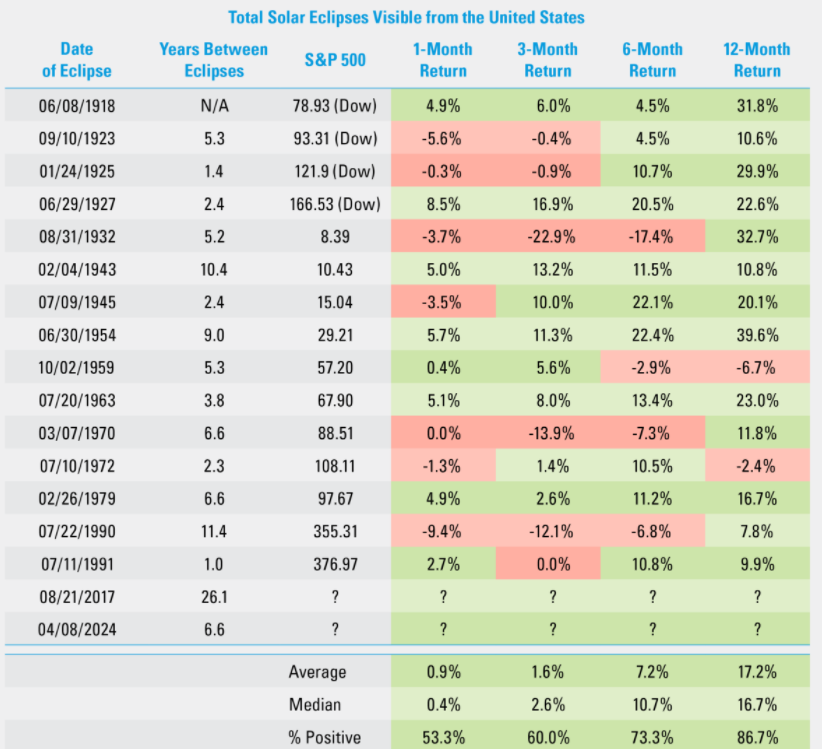Here's how stocks perform after a solar eclipse
A total solar eclipse may represent a blockage of sunlight, but the stock market has historically caught fire after past occurrences.
US equity prices have climbed an average of 17.2% in the year following total solar eclipses visible from the US, according to data compiled by LPL Financial. The last time came in July 1991, after which stocks rose 9.9%.
RELATED: Here's how the stock exchange performed before the election:
"History has shown us that since 1900, any time a total solar eclipse has been seen in the U.S., equity prices have gone up," LPL Financial senior market strategist Ryan Detrick wrote in a recent blog post. "It appears our biggest worry isn't what stocks might do, but whether those glasses we bought online are officially approved by NASA!"
Of course, this research must be taken with a grain of salt. There are so many other drivers of equity performance that any correspondence with the solar calendar should be viewed as coincidental byproduct.
The S&P 500 is currently about 8 1/2 years into its ongoing bull market, which makes it already the second-longest on record. It's continuation will hinge on whether corporations can keep growing earnings, and if economic conditions can remain robust.
"Should you ever invest based on the solar system? Absolutely not," said Detrick. "Things like fundamentals, valuations and technicals are still what drive markets."
Here's LPL's full breakdown of past performance, post-eclipse:

LPL Financial
NOW WATCH: THE BOTTOM LINE: New record highs for stocks and a deep dive into Apple's iPhone
More from Business Insider:
The Fed just fired off a stark warning — and it highlights one of the biggest risks for stocks
The way Tesla and Amazon are raising billions shows why traders shouldn't be scared of big stock drops
Tech 'unicorn' IPOs are booming
